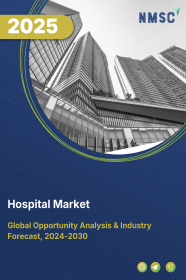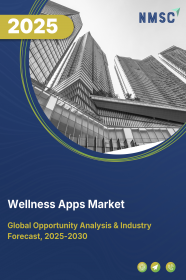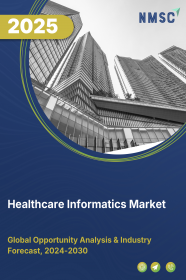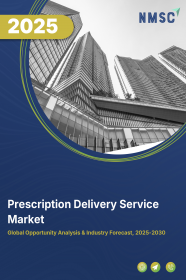
Hospital Market by Type (Public Hospitals, Private Hospitals, and Others), by Service Type (Inpatient Services, Outpatient Services and Others), by Speciality Area (General Medicine, Cardiology, Oncology, and Others), by Ownership (Public Hospitals, Private Hospitals and Non-Profit Hospitals), and by Bed Capacity (Small Hospitals (Less Than 100 Beds), Medium Hospitals (100-500 Beds), and Large Hospitals (More Than 500 Beds))–Global Opportunity Analysis and Industry Forecast 2025-2030
US Tariff Impact on Hospital Market
Trump Tariffs Are Reshaping Global Business
Hospital Market Overview
The global Hospital Market size was valued at USD 7.39 trillion in 2024 and is predicted to reach USD 10.29 trillion by 2030 with a CAGR of 5.7% from 2025-2030.
The hospital market is growing due to the rise in aging population, increase in number of chronic diseases and government investment. However, the high healthcare service cost slows down the overall growth of the market.
On the contrary, integration of AI in healthcare gadgets and diagnostic devices unlock opportunities for the market growth that detect deadly diseases at an early stage. The major players operating in the healthcare market namely, Apollo Hospitals and National Health Services and others are adopting various business strategies including launches and collaborations to enhance their market expansion and broaden their service offering.
As the technologies expand, the hospital market is set for further revolution as intelligent automation in the medical diagnostic devices projected to enhance the efficiency of those by reducing human error and improve the speed, efficiency alongside accuracy of testing.
Rising Aging Population Driving Hospital Market Expansion
Increased aging population is leading the growth in the worldwide hospital market trends, with elderly people needing regular medical, specialized, and long-term care services. Based on latest reports released by the United Nations, by the late 2070s the number of the world's population aged 65 and above is projected to reach 2.2 billion. Moreover, by the mid-2030s, 265 million people will be 80 and above aged. Such growth of the aging population is driving demand for hospital management, as well as better healthcare centres all over the world.
Rising Chronic Diseases Driving Global Hospital Demand
The rising prevalence of chronic diseases is driving the hospital market, as more patients require continuous medical care, advanced treatments, and specialized facilities.
According to reports published by United Nations 2024, cancer incidence globally is projected rise by 77% till 2050, while other developed nations are projected to scale an additional 4.8 million new cancer cases. This rise in long-term disease is rising hospitalization, and the healthcare professionals are increasing capacity, improving technology, and expanding the availability of productive treatments.
Government Investment Driving the Hospital Market Growth
The increasing expansion of healthcare services due to government investment drives the healthcare market demand. Governments worldwide are prioritizing healthcare infrastructure improvements that leads the need to enhance efficiency and patient care.
For instance, in April 2024, World Bank Group aims to expand health services to 1.5 billion people by 2030 that focusses on comprehensive care across all life stages. Subsequently, this rise in health services increases support towards advanced diagnostic tools and patient management systems.
High Operational Costs Restraining Hospital Market Expansion
Rising healthcare service costs, such as expensive clinical procedures, hi-tech equipment, and hospital care, are hindering access to good-quality health care. So, in poor- and middle-income regions clinical care is evaded or delayed by the majority of the patients due to its cost factor, thereby hindering the growth in the market of healthcare services.
AI-Powered Healthcare Transforming Hospital Services
Adoption of AI-diagnostic gadgets and machineries in hospitals is expected to bring a drastic transformation in healthcare services. Such innovations are projected to streamline treatment accuracy, balance the workload of medical professionals, and enhance patient satisfaction.
While hospitals deploy advanced technologies, more market growth will come into picture as smart healthcare infrastructure involve new openings for opportunities. According to reports published by World Economic Forum, 2024, survival from colorectal cancer is just 14% if it is detected late, whereas approximately 90% when detected early. This shows the potential of improving healthcare with AI.
Market Segmentations and Scope of the Study
The hospital market report is segmented on the basis of type, service type, speciality area, ownership, bed capacity, and region. On the basis of type, the market is bifurcated into public (government) hospitals, private hospitals, speciality & super speciality hospitals and teaching & research hospitals. On the basis of service type, the market is segmented into inpatient services, outpatient services, emergency & trauma care, diagnostic & imaging services, surgical services. Based on speciality area, the market is segmented into general medicine, cardiology, oncology, neurology, orthopaedics, obstetrics & gynaecology, paediatrics, urology and other specialized services. On basis of ownership, the market is classified into public hospitals, private hospitals and non-profit hospitals. On the basis of bed capacity, the market is bifurcated into small hospitals (less than 100 beds), medium hospitals (100-500 beds), large hospitals (more than 500 beds). Regional breakdown and analysis of each of the aforesaid segments includes regions comprising of North America, Europe, Asia-Pacific, and Rest of The World (Row).
Geographical Analysis
North America dominates the hospital market share and is expected to maintain this position during the forecast period. Government spending on medical centres and advanced medical equipment is driving healthcare expansion across the region.
According to World Economic Forum Publications, 2024, the U.S. venture capital invested in AI healthcare is reached USD 11 billion by the end of 2024. The investment is modernizing healthcare systems, remodelling facilities, and improving the level of patient care. With continued support, the health sector is poised for long-term growth and development.
Additionally, growing volumes of cancer patients in this region are driving demand for advanced hospital services, including specialized cancer care and advanced treatments.
Reports published by the Government of Canada, 2024, indicate that around 1 out of every 4 Canadians die due to cancer, with a slightly higher probability for males with around 24% compared to females with around 21%. This rise in cancer patients is boosting up the demand for hospitals to expand cancer treatment facilities and invest in advanced medical technologies.
Meanwhile, the Asia-Pacific region is expected to experience steady growth in the industry over the forecast period. Hospital demand in the region is being driven by growth of aging population, mostly for illness related to old age and long-term care.
As per UNFPA reports, 2023, the aging population of India is projected to rise from 153 million to 347 million by 2050. This increase is motivating hospitals to upgrade facilities, recruit more healthcare professionals, and buy improved medical equipment.
Moreover, population growth of the infants in the region are creating a focus on maternity care, neonatal and paediatric care resulting in rise in market growth by adding new buildings and upgrading its own infrastructure.
For example, in January 2025, the National Bureau of Statistics (NBS) stated that 9.54 million infants born were accounted in China in 2024, a boost of 0.5 million babies born in contrast to 2023. This is fueling hospital investment to advance maternal and child health care service, thereby boosting the market growth.
Competitive Landscape
Various market players operating in the hospital industry includes Apollo Hospitals, Fortis Healthcare, Aster DM Healthcare, Max Healthcare, Asian Institute of Medical Sciences, Mayo Clinic, Cleveland Clinic, Global Hospitals Group, The Johns Hopkins Hospital, HCA Healthcare, Manipal Hospitals, Tenet Healthcare, Medica Hospitals, Metro Group of Hospitals, Toronto General - University Health Network and others. These market players are adopting strategies such as collaboration and product launch to remain dominant in the market.
For instance, in Feb 2025, the National Health Services, (NHS), recently launched its first-ever breast cancer screening campaign, driving increased awareness and early detection efforts.
Since its launch last week, NHS breast screening advice pages recorded 32,432 footfalls, highlighting rising public engagement. This initiative is expected to boost the hospital market by increasing demand for diagnostic services, advanced screenings, and specialized cancer care facilities.
Besides, in January 2025, Apollo Hospitals and the University of Leicester collaborated to set up a precision medicine and digital health research institute. This is projected to increase personalized treatments and telemedicine-based healthcare solutions, fuel innovation and improve hospital efficiency in India and globally.
Key Benefits
-
The report provides quantitative analysis and estimations of the hospital industry from 2025 to 2030, which assists in identifying the prevailing market opportunities.
-
The study comprises a deep-dive analysis of hospital industry including the current and future trends to depict prevalent investment pockets in the market.
-
Information related to key drivers, restraints, and opportunities and their impact on the hospital sector is provided in the report.
-
Competitive analysis of the players, along with their market share is provided in the report.
-
SWOT analysis and Porters Five Forces model is elaborated in the study.
-
Value chain analysis in the market study provides a clear picture of roles of stakeholders.
Hospital Market Key Segments
By Type
-
Public (Government) Hospitals
-
Private Hospitals
-
Speciality & Super Speciality Hospitals
-
Teaching & Research Hospitals
By Service Type
-
Inpatient Services
-
Outpatient Services
-
Emergency & Trauma Care
-
Diagnostic & Imaging Services
-
Surgical Services
By Speciality Area
-
General Medicine
-
Cardiology
-
Oncology
-
Neurology
-
Orthopaedics
-
Obstetrics & Gynaecology
-
Paediatrics
-
Urology
-
Other Specialized Services
By Ownership
-
Public Hospitals
-
Private Hospitals
-
Non-Profit Hospitals
By Bed Capacity
-
Small Hospitals (Less than 100 Beds)
-
Medium Hospitals (100-500 Beds)
-
Large Hospitals (More than 500 Beds)
By Region
-
North America
-
The U.S.
-
Canada
-
Mexico
-
-
Europe
-
The U.K.
-
Germany
-
France
-
Italy
-
Spain
-
Denmark
-
Netherlands
-
Finland
-
Sweden
-
Norway
-
Russia
-
Rest of Europe
-
-
Asia-Pacific
-
China
-
Japan
-
India
-
South Korea
-
Australia
-
Indonesia
-
Singapore
-
Taiwan
-
Thailand
-
Rest of Asia-Pacific
-
-
Rest of the World (RoW)
-
Latin America
-
Middle East
-
Africa
-
Key Players
-
Apollo Hospitals
-
Fortis Healthcare
-
Aster DM Healthcare
-
Max Healthcare
-
Asian Institute of Medical Sciences
-
Mayo Clinic
-
Cleveland Clinic
-
Global Hospitals Group
-
The Johns Hopkins Hospital
-
HCA Healthcare
-
Manipal Hospitals
-
Tenet Healthcare
-
Medica Hospitals
-
Metro Group of Hospitals
-
Toronto General - University Health Network
REPORT SCOPE AND SEGMENTATION:
|
Parameters |
Details |
|
Market Size in 2024 |
USD 7.39 Trillion |
|
Revenue Forecast in 2030 |
USD 10.29 Trillion |
|
Growth Rate |
CAGR of 5.7% from 2025 to 2030 |
|
Analysis Period |
2024–2030 |
|
Base Year Considered |
2024 |
|
Forecast Period |
2025–2030 |
|
Market Size Estimation |
Billion (USD) |
|
Growth Factors |
|
|
Countries Covered |
28 |
|
Companies Profiled |
15 |
|
Market Share |
Available for 10 companies |
|
Customization Scope |
Free customization (equivalent to up to 80 working hours of analysts) after purchase. Addition or alteration to country, regional, and segment scope. |
|
Pricing and Purchase Options |
Avail customized purchase options to meet your exact research needs. |

















 Speak to Our Analyst
Speak to Our Analyst





















